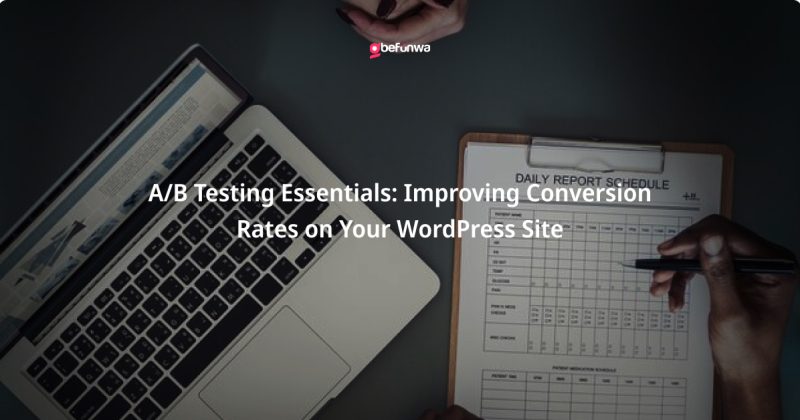
Optimizing your WordPress site for maximum conversions is paramount. One effective strategy that can significantly enhance your website’s performance is A/B testing. By experimenting with different design elements, content variations, and calls-to-action (CTAs), you can identify what resonates best with your audience and drive higher conversion rates. In this comprehensive guide, we’ll explore the essentials of A/B testing and how you can leverage it to improve the effectiveness of your WordPress site.
A/B testing, also known as split testing, involves comparing two versions of a webpage or element to determine which one performs better in terms of user engagement and conversions. By presenting different variations to your audience simultaneously, you can gather valuable data and insights to inform your optimization efforts.
Before conducting A/B tests, it’s essential to define clear goals and metrics to measure success. Common metrics to track include click-through rates (CTR), conversion rates, bounce rates, and time on page. By focusing on specific metrics relevant to your objectives, you can effectively evaluate the impact of your test variations.
When planning A/B tests, consider experimenting with various elements of your WordPress site, such as headlines, images, buttons, forms, and layout. Test one variable at a time to isolate its impact and accurately assess its effectiveness. For example, you could test different button colors, CTA text, or placement of signup forms to determine which variation generates the highest conversions.
Formulate hypotheses based on insights from user behavior, industry best practices, and data analysis. Clearly define the changes you intend to make and the expected outcomes of each variation. Hypotheses should be specific, measurable, and actionable, guiding your testing process and informing future optimization strategies.
Implement A/B tests using reliable testing tools and plugins available for WordPress. Ensure that your testing setup is statistically significant and that you have a large enough sample size to draw meaningful conclusions. Run tests for an appropriate duration to account for variations in traffic and user behavior.
Once your tests are complete, analyze the data to determine which variations outperform others in achieving your goals. Pay close attention to statistical significance and confidence intervals to validate your findings. Identify winning variations and incorporate them into your WordPress site to drive improvements in conversion rates.
A/B testing is an iterative process, and ongoing experimentation is essential for continuous improvement. Use insights from successful tests to inform future optimizations and refine your website’s design, content, and functionality. By adopting a data-driven approach to optimization, you can refine your WordPress site over time and maximize its conversion potential.
A/B testing is a powerful tool for optimizing your WordPress site and improving conversion rates. By systematically testing different elements and variations, you can gain valuable insights into user preferences and behavior, ultimately driving higher engagement and conversions.
Deborah Oludimu is an experienced content writer with 3+ years of experience. She is skilled in research, writing, and editing to produce high-quality, engaging content across industries. Deborah is passionate about creating content that informs and inspires
© 2025 GBEFUNWA.COM. All rights reserved.
The WordPress® trademarks are the intellectual property of the WordPress Foundation, and the Woo® and WooCommerce® trademarks are the intellectual property of WooCommerce, Inc. Uses of the WordPress®, Woo®, and WooCommerce® names in this website are for identification purposes only and do not imply an endorsement by WordPress Foundation or WooCommerce, Inc. gbefunwa is not endorsed or owned by, or affiliated with, the WordPress Foundation or WooCommerce, Inc.